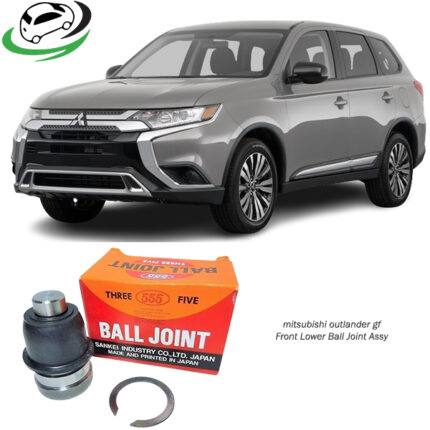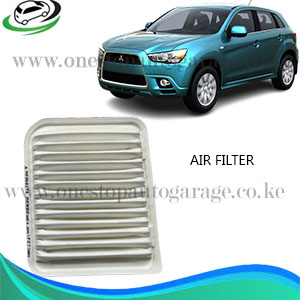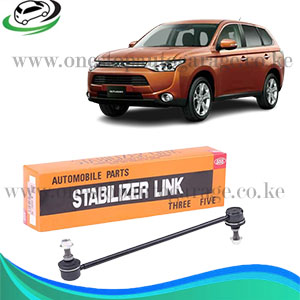-9%
FRONT STABILIZER LINK MITSUBISHI OUTLANDER GF IN NAIROBI KENYA.
Find the best prices for Front Stabilizer Links Mitsubishi Outlander GF (555) in Nairobi Kenya.
The price for Mitsubishi Outlander Front Stabilizer Links is Ksh5000 per pair in Nairobi Kenya.
Understanding the Significance of Stabilizer Links in Vehicle Suspension Systems
In the intricate web of automotive components, the stabilizer link emerges as a vital element within the suspension system. This seemingly modest part plays a pivotal role in ensuring stability, control, and a comfortable ride for a vehicle. In this exploration, we delve into the essence of stabilizer links, their functions, importance, and the impact they have on the overall driving experience.
Overview of the Stabilizer Link:
The stabilizer link, commonly known as a sway bar link or anti-roll bar link, is a crucial component in a vehicle’s suspension system. Its primary function is to connect the sway bar (or anti-roll bar) to the suspension components, such as the control arm or strut. The sway bar itself is a metal rod that spans the width of the vehicle and is mounted to both the left and right sides of the suspension.
Functionality:
The key function of the stabilizer link is to minimize body roll during cornering or abrupt maneuvers. When a vehicle navigates a turn, lateral forces are generated, causing the body to lean to one side. The sway bar, connected by the stabilizer links, acts as a torsional spring, resisting this body roll. This enhances stability, improves handling, and provides a more controlled and comfortable driving experience.
Components and Construction:
A typical stabilizer link consists of a metal rod with joints or bushings at each end. The rod is often made of high-strength steel or other durable materials to withstand the stresses encountered during operation. The joints are typically ball-and-socket or bushing-type connections, allowing for movement and flexibility while maintaining structural integrity.
Impact on Vehicle Dynamics:
- Body Roll Reduction: The primary role of the stabilizer link is to reduce body roll during cornering. By connecting the sway bar to the suspension components, the link facilitates the transfer of forces, resisting excessive leaning of the vehicle. This is particularly crucial for tall or top-heavy vehicles like SUVs, where body roll can be more pronounced.
- Improved Cornering Stability: The reduction in body roll enhances the vehicle’s stability during turns. This results in improved cornering performance and a more predictable handling behavior, contributing to overall safety and driver confidence.
- Enhanced Traction: The stabilizer link’s influence on suspension dynamics contributes to improved traction, especially during aggressive maneuvers. This is particularly important for high-performance vehicles or those operating in challenging road conditions.
- Balanced Ride Comfort: While the stabilizer link aids in dynamic vehicle behavior, it also plays a role in maintaining a balanced ride. It helps prevent excessive weight transfer from one side of the vehicle to the other, contributing to a smoother and more comfortable ride for occupants.
Common Issues and Maintenance:
Like many automotive components, stabilizer links are subject to wear and tear over time. Common issues include:
- Bushings and Joint Wear: The joints and bushings on the stabilizer link can wear out due to constant movement and exposure to the elements. This can lead to clunking or rattling noises during driving.
- Corrosion: The metal rod of the stabilizer link is exposed to the environment and is susceptible to corrosion. Corrosion can weaken the link, affecting its structural integrity.
- Looseness or Play: Excessive play in the stabilizer link can result in a loss of effectiveness, compromising the vehicle’s handling and stability.
Regular inspections during routine maintenance checks can help identify these issues early. When replacing stabilizer links, it’s advisable to use quality components that meet or exceed the original equipment manufacturer (OEM) specifications to ensure proper fit and performance.
Conclusion:
In the intricate dance of automotive engineering, the stabilizer link emerges as a silent yet influential partner, contributing to the vehicle’s stability, control, and overall performance. Its role in mitigating body roll, enhancing traction, and providing a balanced ride underscores its significance in the dynamic interplay of suspension components. As vehicle manufacturers continue to refine and innovate suspension systems, the stabilizer link remains a fundamental element, steadfast in its commitment to delivering a secure and enjoyable driving experience. Understanding its importance allows vehicle owners and enthusiasts alike to appreciate the engineering marvel that is the modern automotive suspension system.



